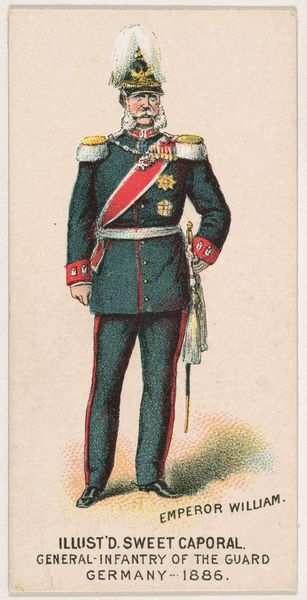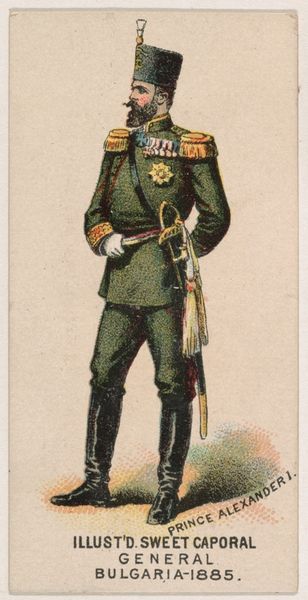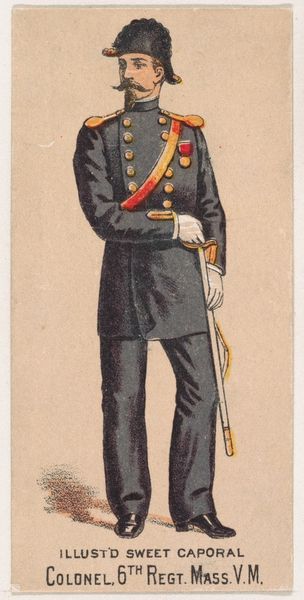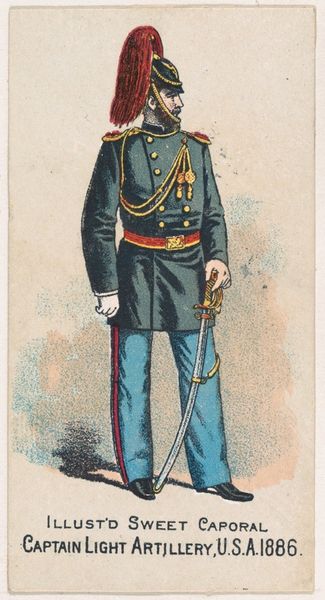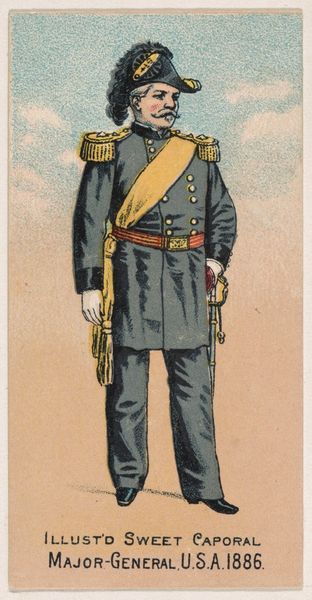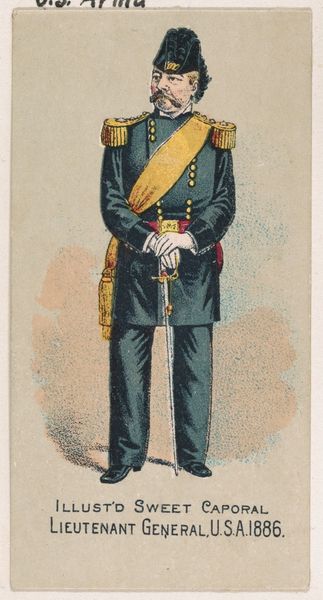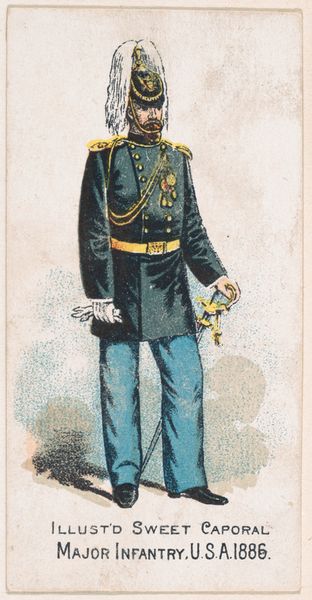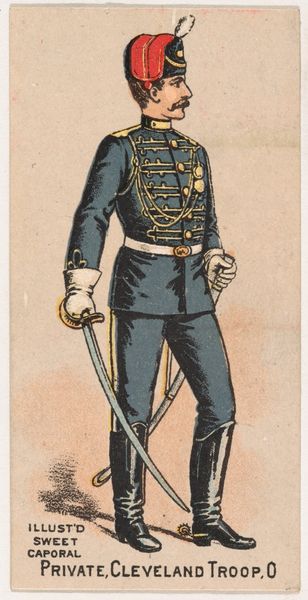
Staff Officer, Commandant, Sweden, 1886, from the Military Series (N224) issued by Kinney Tobacco Company to promote Sweet Caporal Cigarettes 1888
0:00
0:00
drawing, print
#
portrait
#
drawing
# print
#
genre-painting
Dimensions: Sheet: 2 3/4 × 1 1/2 in. (7 × 3.8 cm)
Copyright: Public Domain
Editor: Here we have "Staff Officer, Commandant, Sweden, 1886," a print made around 1888 by Kinney Brothers Tobacco Company. It feels very formal and almost romantic to me, with all the gold braid and that incredible hat. What catches your eye when you look at this image? Curator: The symbols are potent. The uniform, the sword, the gesture of the salute—each carries immense cultural weight. Consider the salute itself; it signifies respect, authority, but also subordination. It’s a visual shorthand for a complex social hierarchy, echoed through centuries. What do you make of the headdress? Editor: Well, it looks quite extravagant, almost flamboyant. The gold plume seems purely decorative, a marker of status perhaps? Curator: Precisely! But let’s consider the deeper roots. Feathers have historically symbolized power, spirituality, even connection to the divine across many cultures. The officer isn't merely wearing a hat; he's donning a history of symbolic association. Look, too, at how the sword becomes an extension of his being, a symbol of military prowess and commitment to state, though notably un-unsheathed and perhaps more ceremonial. Can you see how consumer culture leverages the military here? Editor: That makes so much sense! So Kinney Tobacco Company is trading on the historical symbolism to promote a certain image or association. Curator: Yes! They connect their brand, 'Sweet Caporal' cigarettes, with ideas of strength, history, and perhaps even a touch of exotic European sophistication. The picture condenses cultural memory to advertise smoking pleasure, so selling their vision. Editor: It's amazing how much can be unpacked from something that appears so simple on the surface. I'll never look at old advertisements the same way again! Curator: Indeed. These images often act as mirrors, reflecting back the values and aspirations of the society that produced them, and reveal our modern obsessions.
Comments
No comments
Be the first to comment and join the conversation on the ultimate creative platform.
